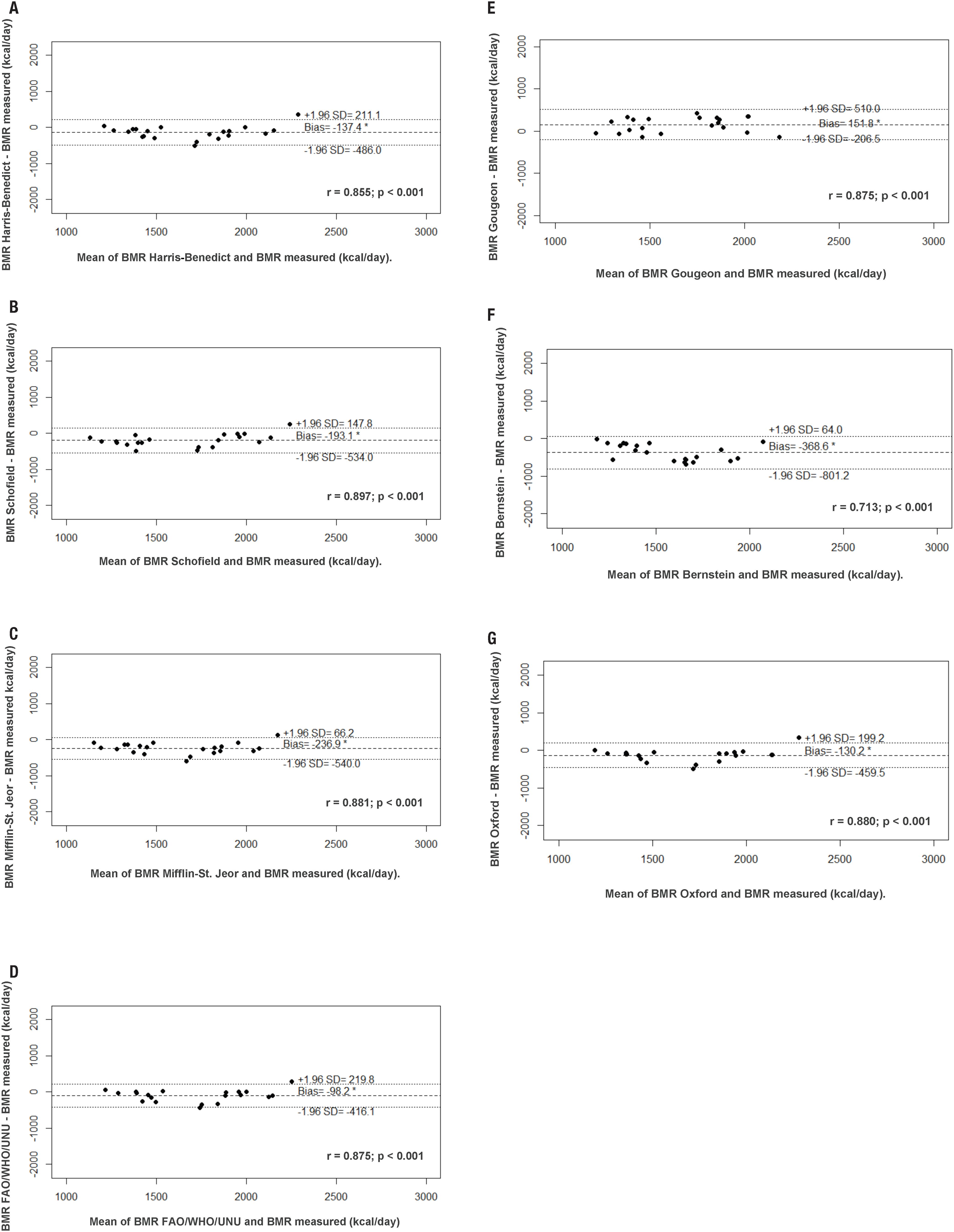ABSTRACT
Objectives:
The aims of this study are to investigate which of the seven selected predictive equation for estimating basal metabolic rate (BMR) is the best alternative to indirect calorimetry (IC) and to evaluate the dietary energy intake in patients with type 2 diabetes.
Subjects and methods:
Twenty-one patients with type 2 diabetes participated in this diagnostic test study. Clinical and laboratorial variables were evaluated as well as body composition by absorptiometry dual X-ray emission (DXA) and BMR measured by IC and estimated by prediction equations. Dietary intake was evaluated by a quantitative food frequency questionnaire. Data were analyzed using Bland–Altman plots, paired t-tests, and Pearson's correlation coefficients.
Results:
Patients were 62 (48-70) years old, have had diabetes for 8 (2-36) yeas, and 52.4% were females. The mean body composition comprised a fat-free mass of 49.8 ± 9.4 kg and a fat mass of 28.3 ± 7.2 kg. The energy intake was 2134.3 ± 730.2 kcal/day and the BMR by IC was 1745 ± 315 kcal/day. There was a wide variation in the accuracy of BMR values predicted by equations when compared to IC BMR measurement. Harris-Benedict, Oxford, FAO/WHO/UNO equations produced the smallest differences to IC, with a general bias of < 8%. The FAO/WHO/UNO equation provided the best BMR prediction in comparison to measured BMR.
Conclusion:
In patients with type 2 diabetes, the equation of the FAO/WHO/UNO was the one closest to the BMR values as measured by IC.
Keywords
Indirect calorimetry; basal metabolic rate; energy metabolism; type 2 diabetes

